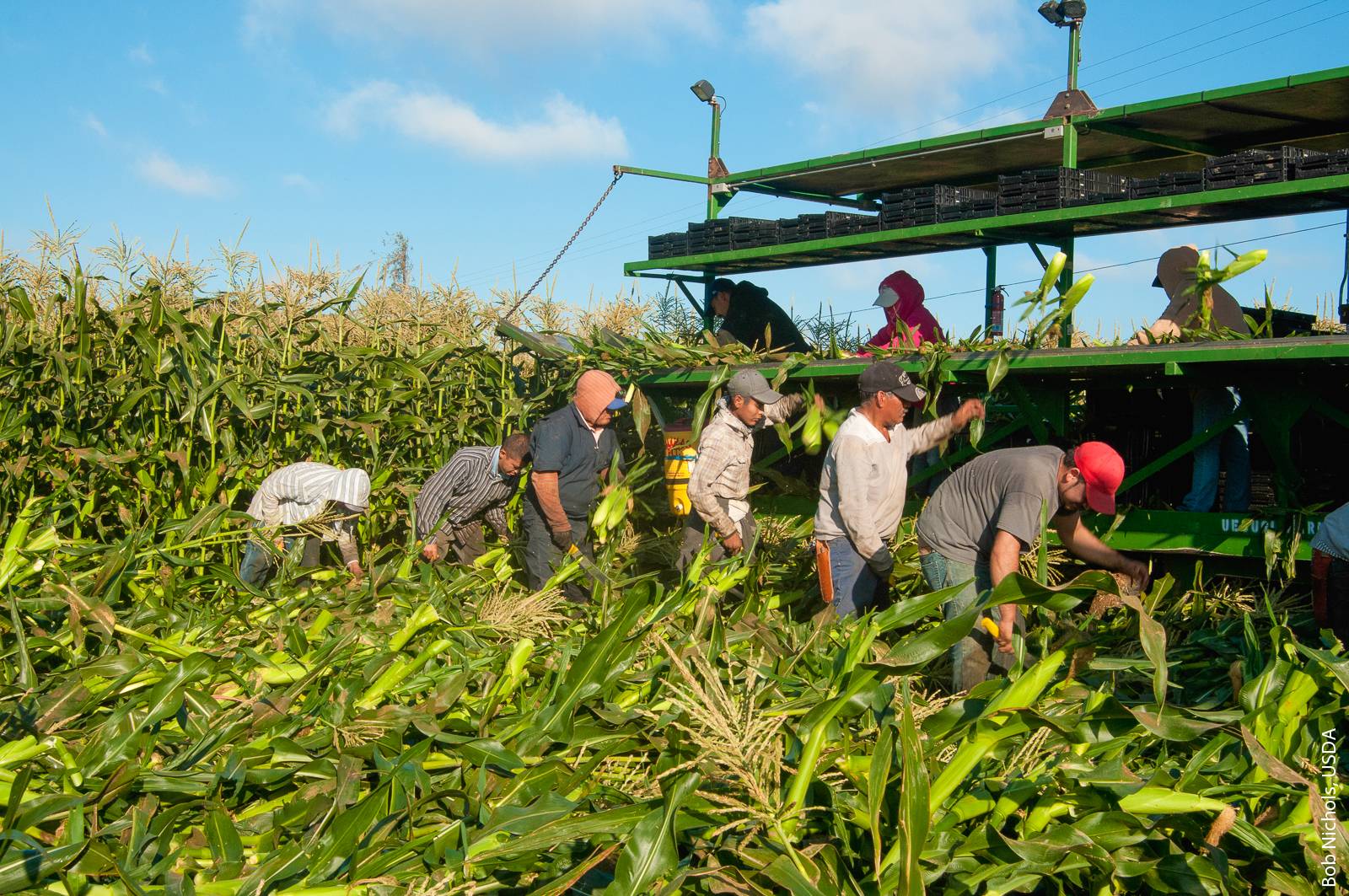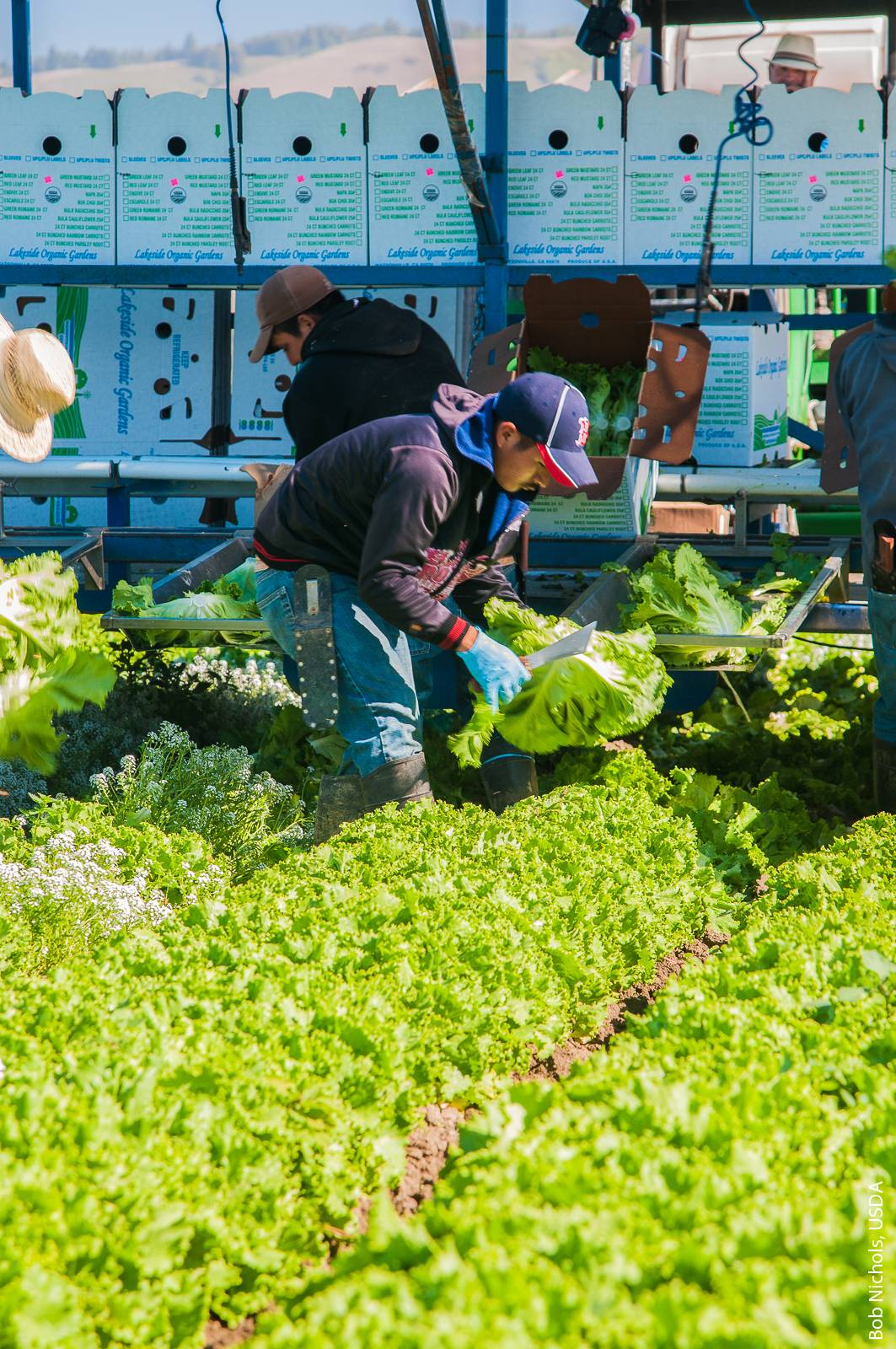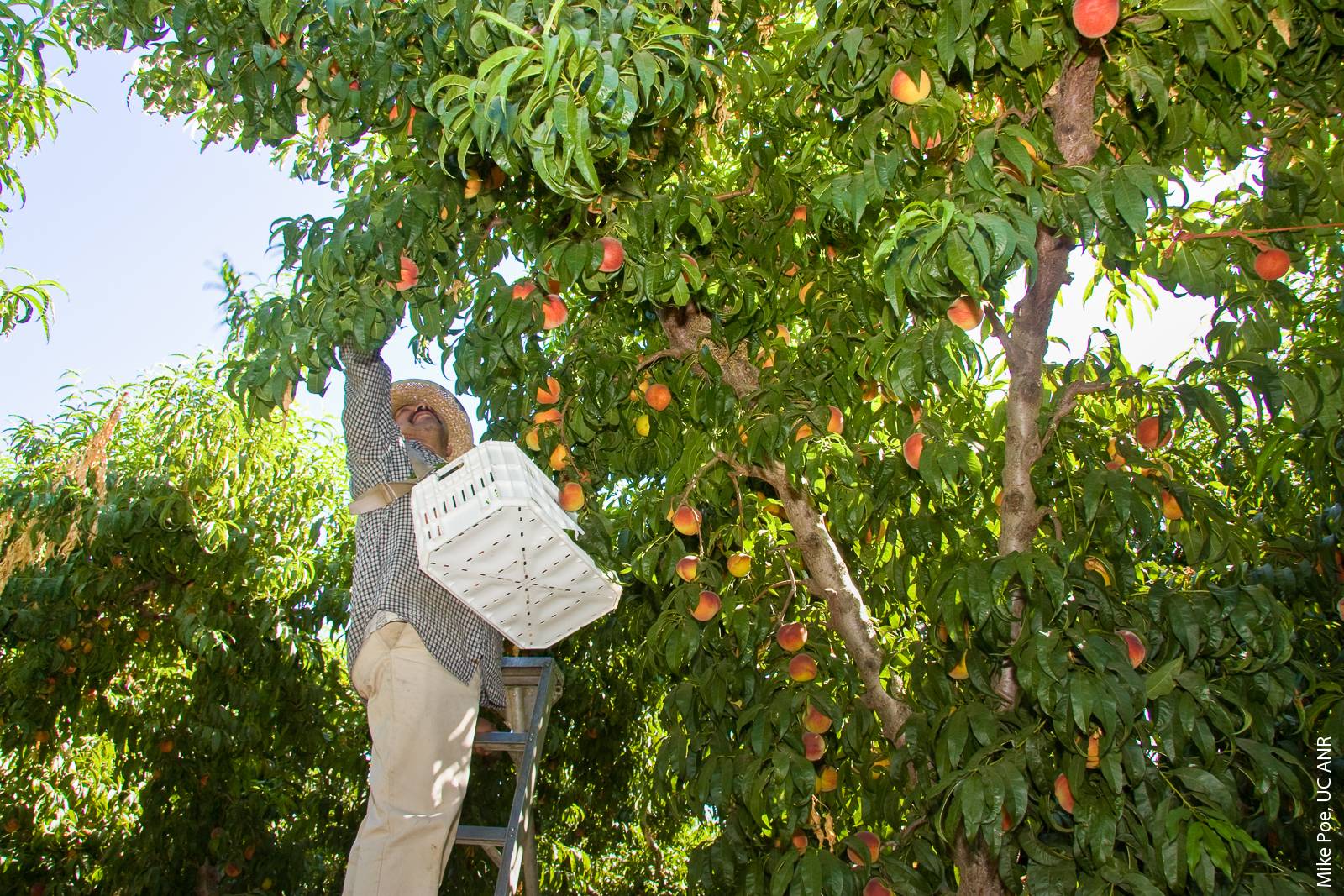All Issues
The race in the fields: Imports, machines and migrants
Publication Information
California Agriculture 72(2):100-101. https://doi.org/10.3733/ca.2017a0050
Published online December 21, 2017
PDF | Citation | Permissions
NALT Keywords
Summary
Four ways farmers are responding to the tightening labor market.
Full text
The slowdown in unauthorized Mexico–U.S. migration has set off a race in U.S. agriculture between rising imports, more machines, and foreign guest workers. Trade policy, including North American Free Trade Agreement (NAFTA) re-negotiations, and immigration policy, including more enforcement and new or revised guest worker programs, will determine the winner.
Fewer and larger farms that depend on hired workers produce most U.S. fruits, vegetables, and horticultural crops such as nursery plants. The number of farms in the United States has been stable at 2 million, but the largest 10% of all farms account for three-fourths of U.S. farm sales. In fresh vegetables, the largest 10 producers account for more than half of the lettuce, broccoli and carrots produced.
Farmworkers harvest sweet corn in Santa Clara County. Due to a decrease in unauthorized immigration from Mexico, there has been a decline in the availability of farmworkers, in particular newcomers willing to move to follow short-term farm jobs. Farmers are stepping up their efforts to retain current workers and are turning to machines to help improve efficiency.
Americans do not dream of growing up to be farmworkers. About 70% of the hired workers on crop farms were born in Mexico, and 70% of these Mexican-born workers are unauthorized, so half of crop workers are working illegally. California has a higher share of unauthorized workers because more of its workers were born in Mexico, 90% versus less than 70% in other states.
Crop workers are aging and settling. Most have families that include children born in the United States, and very few experienced farmworkers are migrants who follow the crop harvests from south to north. Unauthorized newcomers, who are primarily Mexican-born workers that have been in the United States less than a year, have been the flexible fresh blood of the farm workforce, willing to move to fill vacant jobs. Their share of crop workers peaked at a quarter in 2000, but today such newcomers represent just 1% to 2% of crop workers.
Farmers are responding with four strategies: satisfy current workers to retain them, stretch them with mechanical aids that increase their productivity, substitute machines for workers, and supplement current workers with H-2A guest workers.
Rising minimum wages in many states, fewer migrant farmworkers, and advances in mechanization have encouraged many farmers to invest in machines, which are doing more planting and pruning and are improving rapidly to harvest leaf lettuces (shown here being harvested in Santa Cruz County), blueberries and peaches.
Seasonal farmwork is generally a decade-long job rather than a lifetime career. Training first-level supervisors to reduce favoritism and harassment, offering bonuses to encourage workers to stay through the season, and offering other benefits helps to satisfy current workers and keep them in farmwork longer.
Stretching farmworkers involves management changes and mechanical aids that increase productivity. Most fresh fruits and vegetables are over 90% water, and workers spend much of their time carrying harvested produce down ladders to bins or to the end of rows to receive credit for their work. Dwarf trees mean fewer ladders and faster picking, reducing the need to fill 50- to 60-pound bags of apples and oranges from tall ladders. Slow-moving conveyor belts that move ahead of workers in the fields reduce the need to carry harvested produce, allowing workers to harvest faster and making jobs more attractive to older workers and women.
Substitution is replacing workers with machines. However, mechanization does have some disadvantages. Fresh fruits and vegetables are fragile, and human hands are gentler than mechanical fingers on crops like grapes and peaches. Machines are fixed costs, meaning that farmers must pay for, say, a $200,000 harvesting machine whether there are apples to pick or not, while workers are variable costs who are not paid if storms or disease destroy the apple crop. Nonetheless, rising minimum wages in many states, fewer flexible newcomers, and advances in mechanization have encouraged many farmers to invest in machines, which are doing more planting and pruning and are improving rapidly to harvest blueberries, peaches and leaf lettuces.
The fourth option is recruiting guest workers under the federal H-2A program, which admits an unlimited number of foreign farmworkers to fill seasonal jobs. Receiving permission to hire H-2A guest workers requires farmers to try and fail to recruit U.S.-born workers, provide free housing, and pay an Adverse Effect Wage Rate (AEWR) that averages $12 an hour. The number of farm jobs certified to be filled by H-2A workers tripled over the past decade to 200,000 in FY17 and may surpass the peak number of Braceros by 2025 (the Bracero guest worker program ran from 1942 to 1964; at its peak in the mid-1950s, more than 450,000 Mexican workers participated in it each year). Over 90% of H-2A guest workers are from Mexico.
One legal option for farmers whose crops require manual labor is to hire guest workers under the federal H-2A program. To do this, farmers must first try and fail to recruit workers born in the United States and must provide free housing and a wage that averages $12 per hour.
Half of fruit (including bananas, the most popular) and a quarter of vegetables available to Americans are imported, and there is rapid growth in imports of everything from avocados to raspberries. Mexico is the major source of fresh fruit and vegetable imports, supplying half of the imported fresh fruit and three-fourths of the fresh vegetables. Many of the fruits and vegetables imported from Mexico are produced on farms that involve partnerships between U.S. and Mexican growers and shippers.
Policy will help to determine the winner of the race in the fields. The United States has an overall agricultural trade surplus, but a deficit in agricultural trade with Mexico. The Trump Administration aims to reduce the trade deficit with Mexico in NAFTA renegotiations, which could slow the integration of the North American produce industry that provides year-round supplies of fruits and vegetables.
Farmers have long sought a new or revised guest worker program that would eliminate requirements to try to recruit U.S.-born workers, provide housing, and pay the super minimum AEWR wage. The House Judiciary Committee approved a bill in November 2017 that includes these farmer wishes. If enacted, the Agricultural Guestworker Act (HR 4092) would likely accelerate the influx of farm guest workers, which could reduce support for the engineers and scientists developing machines to replace farmworkers.
Agriculture has been at farm labor crossroads many times, asking who will pick the crops after the exclusion of the Chinese in the 1880s and the termination of the Bracero program in the 1960s. Today’s race in the fields will determine whether Americans will consume more imported produce or whether fruits and vegetables will continue to be grown in the United States and picked by machines or guest workers.







